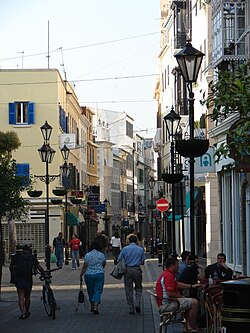 View from Main Street looking north. | |
 | |
| Former name(s) | Calle Real |
|---|---|
| Owner | Government of Gibraltar |
| Length | 1 km (0.62 mi) |
| Location | Gibraltar |
| Coordinates | 36°08′23″N5°21′14″W / 36.139682°N 5.353794°W |

Main Street (original name: Calle Real) is the main arterial street in the British overseas territory of Gibraltar.
